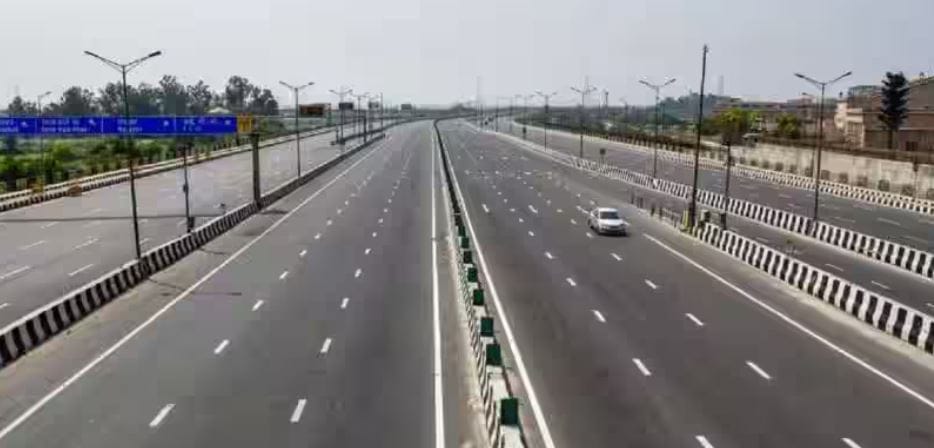Government’s Massive Investment in High-Speed Road Corridors Propels India’s Growth
In a decisive move to accelerate India’s infrastructure development, the government has greenlit eight national high-speed road corridor projects, collectively spanning 936 kilometers and entailing a substantial investment of Rs 50,655 crore. This strategic decision is anticipated to significantly enhance logistics efficiency, bolster connectivity across the nation, and catalyze economic growth. Moreover, the implementation of these projects is projected to generate an impressive 4.42 crore man-days of employment, both directly and indirectly.
Transforming India’s Road Network: Key Corridor Projects Unveiled
The ambitious portfolio of approved projects, overseen by the Cabinet Committee on Economic Affairs, encompasses a diverse array of road enhancements. These include the 6-Lane Agra-Gwalior National High-Speed Corridor, the 4-Lane Kharagpur-Moregram National High-Speed Corridor, the 6-Lane Tharad-Deesa-Mehsana-Ahmedabad National High-Speed Corridor, the 4-lane Ayodhya Ring Road, the 4-Lane Section between Pathalgaon and Gumla of Raipur-Ranchi National High-Speed Corridor, and the 6-Lane Kanpur Ring Road. Each corridor is strategically designed to address specific regional needs and bottlenecks, aiming to alleviate traffic congestion, reduce travel time, and improve overall connectivity.
Prime Minister Modi’s Vision: A Futuristic and Connected India
Prime Minister Narendra Modi, via a statement on X (formerly Twitter), lauded the cabinet’s decision as a “transformative boost” for India’s infrastructure. He emphasized that these high-speed road corridor projects will have a “multiplier effect” on economic growth, create “employment” opportunities, and underscore the government’s dedication to building a modern and interconnected nation.
Financial Models and Multifaceted Benefits
The road corridor projects will be executed under a variety of financial models, including Build-Operate-Transfer (BOT), Hybrid Annuity Mode (HAM), and Engineering, Procurement, and Construction (EPC). This diversified approach ensures optimal resource utilization and risk management. Beyond their economic impact, these corridors will also facilitate access to essential services, promote tourism, and improve the overall quality of life for citizens. The government’s emphasis on a corridor-based development strategy, informed by meticulous transport studies and data analysis, is expected to yield long-term benefits and contribute to India’s ambitious goal of achieving a $30+ trillion economy by 2047.
In Summary
India’s ambitious high-speed road corridor initiative marks a significant milestone in the nation’s infrastructure development. The government’s substantial investment of Rs 50,655 crore in eight strategically located projects is poised to enhance connectivity, streamline logistics, stimulate economic growth, and create substantial employment opportunities. This transformative endeavor reflects India’s commitment to a future characterized by seamless transportation networks and robust economic development.
Key Learning Points
| Point | Description |
|---|---|
| Project Scope | Eight national high-speed road corridor projects covering 936 kilometers. |
| Investment | A total investment of Rs 50,655 crore allocated to the projects. |
| Employment Generation | Anticipated creation of 4.42 crore man-days of direct and indirect employment. |
| Corridor Locations | Agra-Gwalior, Kharagpur-Moregram, Tharad-Deesa-Mehsana-Ahmedabad, Ayodhya Ring Road, Pathalgaon-Gumla, Kanpur Ring Road, Northern Guwahati Bypass, and Nashik Phata-Khed Corridor. |
| Financial Models | Projects to be executed under BOT, HAM, and EPC models. |
| Benefits | Enhanced connectivity, improved logistics efficiency, economic growth, employment generation, and improved quality of life. |
Soumya Smruti Sahoo is a seasoned journalist with extensive experience in both international and Indian news writing. With a sharp analytical mind and a dedication to uncovering the truth, Soumya has built a reputation for delivering in-depth, well-researched articles that provide readers with a clear understanding of complex global and domestic issues. Her work reflects a deep commitment to journalistic integrity, making her a trusted source for accurate and insightful news coverage.



